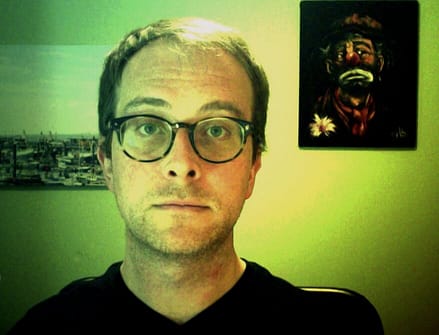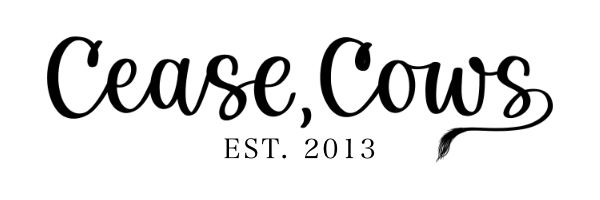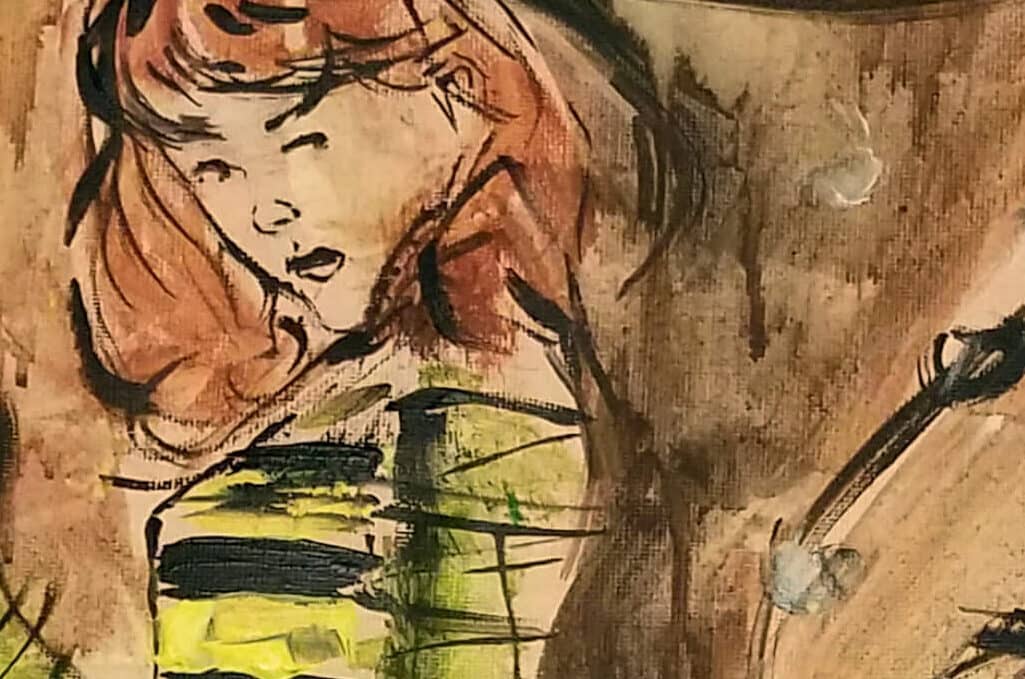
Set in a techno-utopia with a dark side, Rick Claypool’s Leech Girl Lives is a fast paced mash-up, minimalist science fiction that’s not afraid to wrestle with questions about society, revolution, and art. It’s smart, fun, and well worth reading. Purchase a copy here.
Claypool shared his thoughts with Cease, Cows.
Chuck Augello: If you were in a bookstore and saw a potential reader holding a copy of Leech Girl Lives, what might you say to entice him or her to read it?
Rick Claypool: Not gonna lie, imagining this situation makes me feel anxious. As soon as the reader figures out I’m the author and I’m trying to convince her to read my book, it’s like suddenly I’m Ron Popeil pushing a Chop-o-Matic or something. But I do want people to buy my book. So I guess what I should do in this situation is pretend not to be me and then, in my best not-me voice, say something like, “That’s a weird book. If you imagine a mashup of Ursula K. Le Guin and Adventure Time, Leech Girl Lives is sort of like that. Also the author is a first-rate human being. Bye!” Then I leave the bookstore, even if I haven’t yet bought what I went in there for.
CA: Tell us about your main character, Margo Chicago.
RC: Inspector Margo Chicago is a little bit Daria, a little bit Nausicaa, and a little bit Furiosa. She doesn’t put up with bullshit. She has a strong sense of right and wrong, and no patience for moral equivocation. She is super competent at her job. At the same time, she’s kind of depressed. Having leeches devour and replace her arms complicates things for her, obviously, but they prove awfully useful when she must defend herself from oversized mutant invertebrates.
CA: Leech Girl Lives is set in a futuristic locale, The Bublinaplex. How would you describe the novel’s setting?
RC: The Bublinaplex is this kitschy, retro-futuristic sci-fi city, complete with flying vehicles and a geodesic dome. It’s also a city of artists, where neighborhoods are divided according to the kind of art being made there. So there’s a Sculpture District, a Culinary District, and so on. I wanted to mash these things up so it’s like a techno-utopia populated by people who are super creative and able to live lives that are completely fulfilled in that way. But as we see later in the book, there’s a dark side to the Bublinaplex, too.
CA: Much of the plot involves art terrorists who have created an installation with potentially deadly effects. For me, it recalled David Foster Wallace’s Infinite Jest. Was Wallace an inspiration? Does Leech Girl Lives have a specific point of view to convey about the role of art in society?
RC: Confession: I haven’t read Infinite Jest, so no. For me, the story is less about the role of art in society, more about the role of society in creating the conditions for art-making. Everyone is or can be an artist in his or her own way, but our society discourages many people from making things, and they learn, tragically, to describe themselves as “not creative.” The flip side of that is that the few people who do become successful professional artists get to be called “geniuses,” and we collectively agree their talents are extraordinarily rare. I don’t want to overdetermine what readers are supposed to think about what the story means, but I do want to demonstrate the socially constructed nature of art in our current societal formation and allude to the possibility of other, untapped roles for art in society.
CA: The novel is dedicated to your uncle, who left you a truckload of pulp sci-fi. Who were some of the pulp sci-fi writers that inspired you? What do you find appealing about the genre?
RC: John Wyndham was a huge inspiration. I loved The Day of the Triffids, but it was his later novel, Chocky, that kind of obsessed me. He tells strange stories that are packed with social commentary yet are told in very spare, unadorned language. His work showed me that what I was striving to achieve with my book, which was to make a kind of minimalist sci-fi, is possible. Also Murray Leinster, another writer of very economical prose, who had a genius for experimenting on his characters through ridiculous premises. War with the Gizmos, where humanity must fight for survival against invisible, gas-based beings, is a ridiculously fun book.
CA: The novel builds toward Margo’s involvement with a burgeoning revolution. In several passages the leader of the revolution offers her take on how public belief is manipulated by those in power. It felt very much like a reflection on our own society. Was that intentional?
RC: Power structures sustain and reproduce themselves through ideology, and this absolutely is a theme of the novel. Counter-hegemonic movements must engage in intense battles of ideas in order to wrest power from the powerful. This struggle, between the powerful and the powerless, is not unique to our present moment, though it has recently been foregrounded in ways that seem newly catastrophic, with the stakes of climate change including humanity’s ability to keep inhabiting our own planet. The book in some ways was my way of thinking through an answer to the question, what is the proper response to our current crises? I don’t have a full answer, but I hope the book helps others join me in fumbling forward in the dark toward figuring out what principled and effective action looks like right now.
CA: Leech Girl Lives is a “quick” read in the best sense of the word. Were you consciously trying to write a fast-paced novel?
RC: Thank you, that’s very kind of you to say. Yes, there’s a sense of momentum that some works of fiction have, and these works, the ones whose concision and intensity make me want to leap out of my chair, are among my favorites. Push by Sapphire is like this for me, as are Sam Pink’s novels.
CA: Finally, there’s no shortage of ways to spend one’s time. What inspires you to write?
RC: I’m inclined to ruminate on the things going on in my life in a fairly unhealthy way. If I let myself, I will obsess over the details of mistakes I’ve made, fears I have, perceived slights against me, that sort of thing. So, quite practically and therapeutically, coming up with stories gives my brain something to chew on that isn’t the material of my own life. You could say that writing strange stories helps keep me sane.
–
Chuck Augello (Contributing Editor) lives in New Jersey with his wife, dog, two cats, and several cows that refuse to cease. His work has appeared in One Story, Juked, Hobart, Smokelong Quarterly, and other fine places. He publishes The Daily Vonnegut and contributes interviews to The Review Review. He’s currently at work on a novel.

